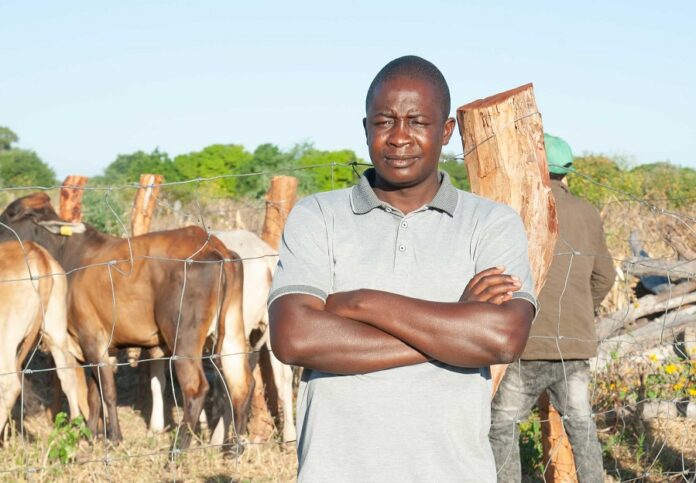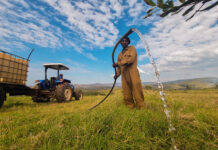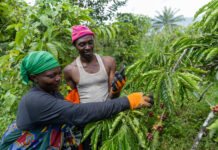The recurring livestock deficit in Zambia has prompted authorities to call sustained investment in the sector to meet local and foreign demand.
Research data available to FRA shows that ruminant livestock numbers in Zambia’s traditional sector comprise an animal population averaging 2.7 million of cattle, 700 000 goats and 70 000 sheep.
The livestock levels represent 82, 97 and 64% of the national cattle, goats and sheep respectively. Most of these animals are concentrated in Eastern, Western and Southern Provinces, findings by International Fund for Agriculture Development (IFAD), an international organization seeking to improve agricultural development and livelihoods in developing countries show.
Agriculture authorities in Northern Zambia seek a sustained investment in the livestock sector-faced with a glaring deficit gap to accelerate economic transformation and human development, Deputy Permanent Secretary Lewis Mwape.
The authorities, realizing the essence of increased investment in the agriculture sector, believe if investment is actualized it would help fight poverty especially among rural households while contributing the country’s foreign exchange would be enhanced.
Noting the Government’s commitment to implementing the Enhanced Smallholder Livestock investment programme and the Sustainable Livestock Infrastructure Management Projects to promote stocking and restocking of Livestock within and the province Mr. Mwape said the programme would guarantee Zambia’s food security.
The programme was a gamechanger as it will further improve household income and meet the nutritional demand.
To increase Livestock numbers in the province, the government through projects like Enhanced Smallholder Livestock investment programme (ESLIP ) and Sustainable Livestock Infrastructure Management Project (SLIMP) are promoting Livestock stocking and restocking.
To date various Livestock ranging from chickens, goats, pigs, rabbits and cattle have been placed in all the 12 districts.
“For us this is very important. I must also add that the province currently has about 54,000herds of cattle and 100,000Goats. This is still not very significant considering the population and nutritional demand of province”, the National Agriculture Information Service (NAIS) -a government agriculture information agency, cites Mr. Mwape as saying.
The Ggovernment has embarked on revamping the Kalungwishi breeding centre 46,000hectares to provide improved cattle breed (Boran) to surrounding farmers and other districts.
The ranch 78 herds of cattle butaces multiple challenges including increased cattle theft, Encroachment, Lack electricity to the facility and Lack of a police post in the vicinity”. According to Mr Mwape.
During a tour of the Kalungwishi Animal Multiplication Centre to appreciate key investment opportunities and challenges the facility is facing in Lunte District, one of the areas where livestock farming is promoted the provincial leadership appreciates the Government’s efforts.
It is hoped the investment will strive to improve the production and productivity of smallholder producers’ livestock systems under two components; Sustainable animal disease control and Sustainable livestock production.
It aims to focus on districts prone to outbreaks of Contagious Bovine Ppleuropneumonia or East Coast fever and other districts where such diseases may spread. Activities will target poor smallholder livestock households, particularly those headed by women or young people.
Zambia and IFAD have a long term US$14.23 million loan and $0.87 million grant agreement to finance the Enhanced Smallholder Livestock Investment Programme (E-SLIP) signed in Rome over four years ago.
The agreement was in recognition of the importance of livestock sector and its contribution to economic growth and food production. The E-SLIP is designed to address the critical gaps in Zambian livestock sector services and technologies.
The control of key cattle diseases that are limiting smallholder herd growth, and forage production for improved livestock health and productivity are some of the gaps to be resolved.
The programme seeks to enlarge and enhance the Ministry of Agriculture and Livestock restocking programme for poor smallholder farmers, an important pathway to pull them out of poverty.
With a total cost of $46.3 million, E-SLIP is co-financed with a $10.6 million contribution from the Government of Zambia, an $8.6 million contribution from the beneficiaries themselves and a $12 million funding gap for which discussions are ongoing with potential co-financers such as OPEC Fund for International Development.
If well managed, Zambia’s ministry of Agriculture and Livestock will directly benefit 180,000 poor rural livestock households that are raising cattle, goats, pigs and poultry.
It targets chiefly the women and young people headed households, improving their economic activities and livelihoods.
An additional 900,000 farm households that raise livestock will benefit indirectly from the programme disease control and technology development.
Since 1981, IFAD has invested a total of $203.6 million in 14 programmes and projects in Zambia, amounting to $320.5 million when co-financing is included. It is estimated nearly 960,000 Zambian rural households have benefitted from these efforts so far, according to IFAD.
Zambia’s finance minister Situmbeko Musokotwane while noting the growth of the livestock sub-sector last fiscal year with production of milk, eggs, chicken, beef and pork increased due to the increase in livestock population pledged to bolster the sector for real returns.
Other initiatives planned for next year include the improved animal husbandry practices, noted some disease challenges like the outbreaks of CBPP and African Swine Fever that emanated pledge the Government’s commitment to revise the sector including constructing bio- security infrastructure on trunk roads and completion of laboratories to counter such pandemics.
There are further plans to induce interventions next year including include establishing an animal vaccine plant, promotion of veterinary public health and food safety and enhancement of animal health research and diagnostics.
Government plans to further develop a robust animal identification and traceability system to reduce the levels of stock theft while enhancing the country’s potential to export at international standards requireing identification and traceability of livestock products from “farm to fork ”.








